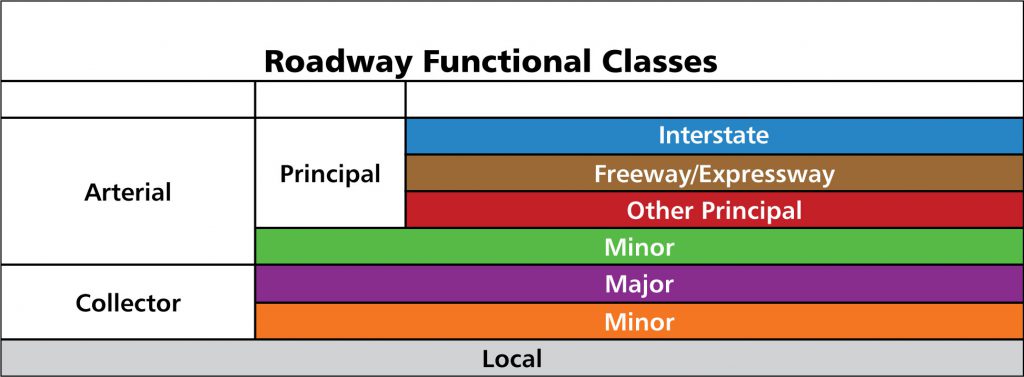East-West Gateway Council of Governments (EWG) is responsible, in cooperation with the Illinois Department of Transportation (IDOT) and the Missouri Department of Transportation (MoDOT), for maintaining and updating the St. Louis region’s Roadway Functional Classification System mandated under federal law. Roadways are classified according to their urban or rural setting and the type of service they provide based on considerations such as: connectivity, mobility, accessibility, vehicle miles traveled, average annual daily traffic, and abutting land use. The purpose of roadway functional classification is to describe how travel is channelized through the region’s roadway network and to determine project eligibility for inclusion in EWG’s Long-Range Transportation Plan and the short-range Transportation Improvement Program (TIP).
A roadway must already be classified, at minimum, as a planned or existing Minor Collector in an urban area or Major Collector in a rural area to be eligible for STP-S funds. The table below shows the roadway functional class hierarchy.


Functional Classification Maps
EWG has developed maps for the city of St. Louis and the seven counties in the St. Louis region. The newest revisions to the Missouri and Illinois Roadway Functional Classification maps received FHWA approval in December 2021 and have been provided below to bring applicants up to date on recent changes.
Current Functional Classification Map
Functional Classification Revisions
EWG periodically revises the functional classification system in the St. Louis region to reflect the changing conditions brought on by regional development, changes to urban boundaries, and FHWA guidelines updates. There are two ways that EWG revises the functional classification system:
- Semi-annually, EWG accepts applications from local jurisdictions to request changes.
- EWG and MoDOT and IDOT perform a system-wide review every five to ten years.
More information about functional classification revisions can be found in EWG’s functional classification manual and the FHWA manual “Highway Functional Classification Concepts, Criteria and Procedures.” Please note that although quantitative criteria like AADT are important, they are not the only criteria for evaluation. A road can have sufficient AADT and still not qualify for an updated classification. System continuity among other criteria is important as well. Generally a roadway of a higher classification should not connect to a single roadway of a lower classification. However if applicants are interested in quantitative criteria, they can be found in pages 22-23 of the FHWA manual.

